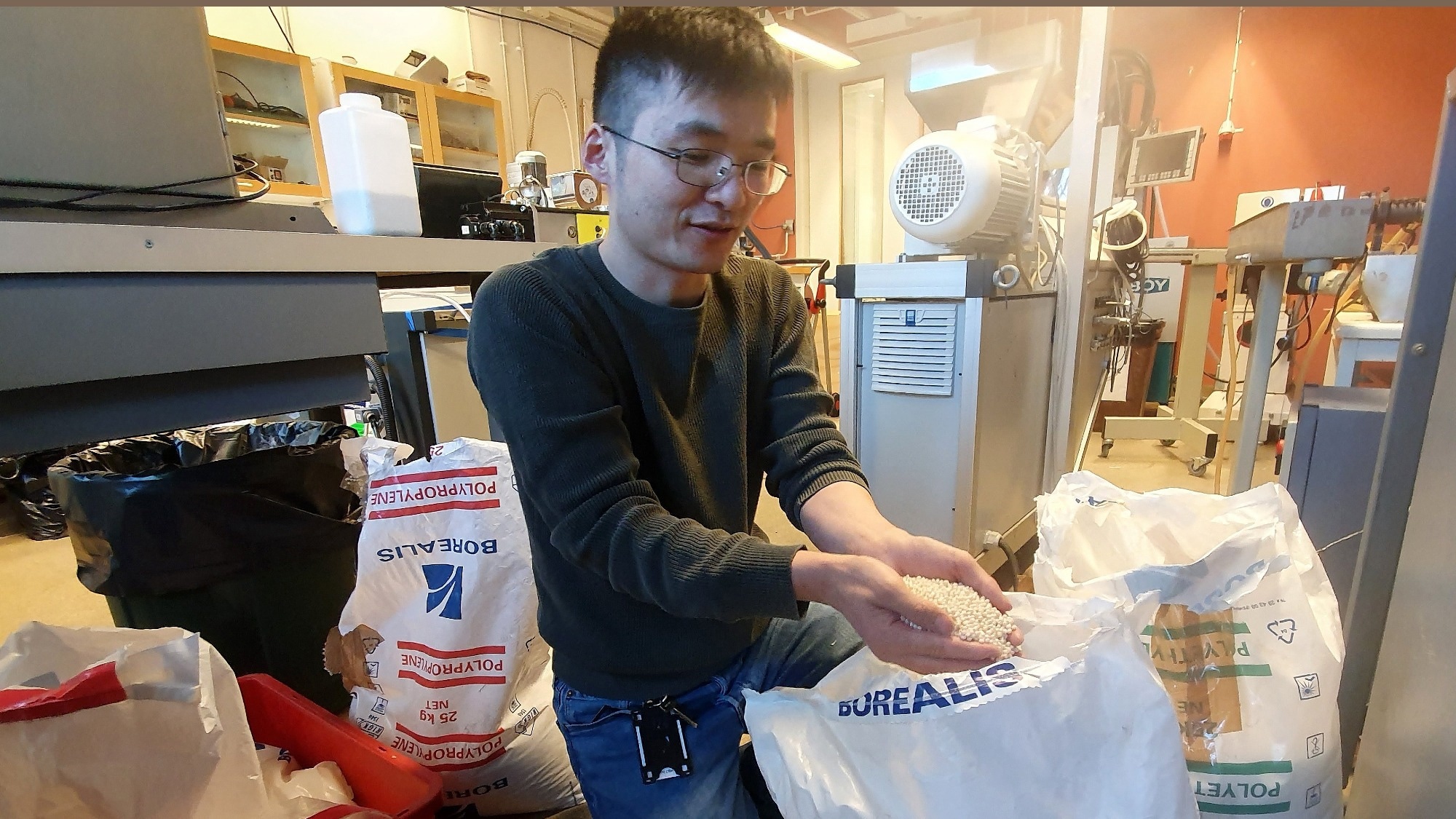Researchers from Sweden revealed that although global warming and plastic pollution are often seen as unconnected issues, they are actually entangled in a “vicious circle” where one causes the other. The study was published in the journal Nature Communications.
 One effect of global warming is faster deterioration of plastics, which in turn results in higher carbon emissions, says Xinfeng Wei, seen here unpacking plastic pellets in the polymer materials lab at KTH Royal Institute of Technology in Stockholm. Image Credit: David Callahan, CC by 2.0
One effect of global warming is faster deterioration of plastics, which in turn results in higher carbon emissions, says Xinfeng Wei, seen here unpacking plastic pellets in the polymer materials lab at KTH Royal Institute of Technology in Stockholm. Image Credit: David Callahan, CC by 2.0
The interdependent connections intensify the effects of global warming, material deterioration, plastic waste generation, and the release of harmful chemicals into the atmosphere.
Rising global temperatures will trigger the deterioration of everyday plastics more quickly, which will lead to a demand for more plastics. Meeting that demand, according to Xinfeng Wei, a Polymeric Materials Researcher at the KTH Royal Institute of Technology in Stockholm, will increase greenhouse gas emissions, which raises the earth's temperature.
A self-reinforcing cycle is formed, creating a vicious circle between climate change and plastic pollution.
Xinfeng Wei, Researcher, Department of Polymeric Materials, KTH Royal Institute of Technology
The manufacture and conversion of plastics from fossil fuels accounted for approximately 1.8 billion tons, or 3.4%, of the world's greenhouse gas emissions in 2019, according to the Organization for Economic Co-operation and Development (OECD). It is anticipated that the number will more than double by 2060.
The researchers propose a feedback loop that connects these emissions to heat, moisture, and the weakening of structural connections, which gives polymers a word for materials like plastic and rubber a wide range of beneficial qualities.
Wei said, “The higher the increase in temperature, the more the materials properties are compromised.”
The stiffness of commonly used plastics like polyethylene, polypropylene, and polyvinyl chloride decreases by more than 20% as temperatures climb between 23 and 40 °C, he said.
Because of this degradation, polymer products, which range from clothes to appliances and car parts, must be replaced more frequently, leading to higher manufacturing rates and volumes.
According to him, there are a variety of knock-on effects, such as food packaging being untrustworthy and an increase in microplastics polluting fish habitats and waterways.
The research details other dangerous substances, such as lubricants, flame retardants, plasticizers, antioxidants, colorants, and UV/heat stabilizers, as well as the release of Volatile Organic Compounds (VOCs) in a warming climate. According to the study, heat will hasten the diffusion, evaporation, and leaching of these compounds into the land, water, and air.
The combined effects of heat and moisture, which increase as a result of global warming, are highlighted by the researchers.
Wei said, “A warmer atmosphere increases the evaporation of moisture and can also hold more water vapor.”
That is terrible news for a lot of materials, but when paired with heat, it especially damages plastics.
The combined effects of rising temperature and moisture create very challenging conditions for these polymers.
Xinfeng Wei, Researcher, Department of Polymeric Materials, KTH Royal Institute of Technology
Wei and the other authors called for attention and mobilization of efforts across all sectors involved in the plastic lifecycle to address the problem of plastic pollution and climate change.
Journal Reference:
Wei, X. F., et al. (2024) Plastic pollution amplified by a warming climate. Nature Communications. doi.org/10.1038/s41467-024-46127-9